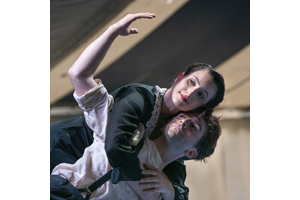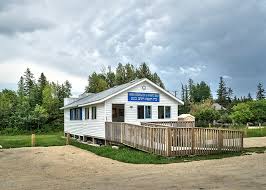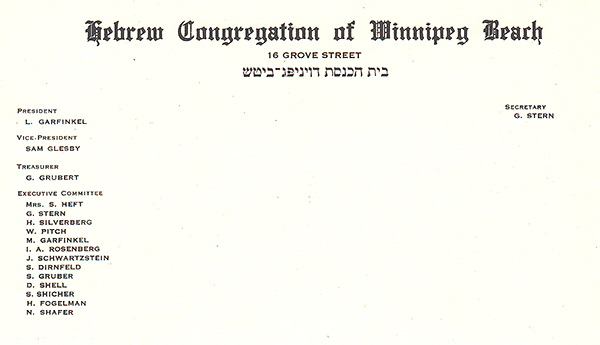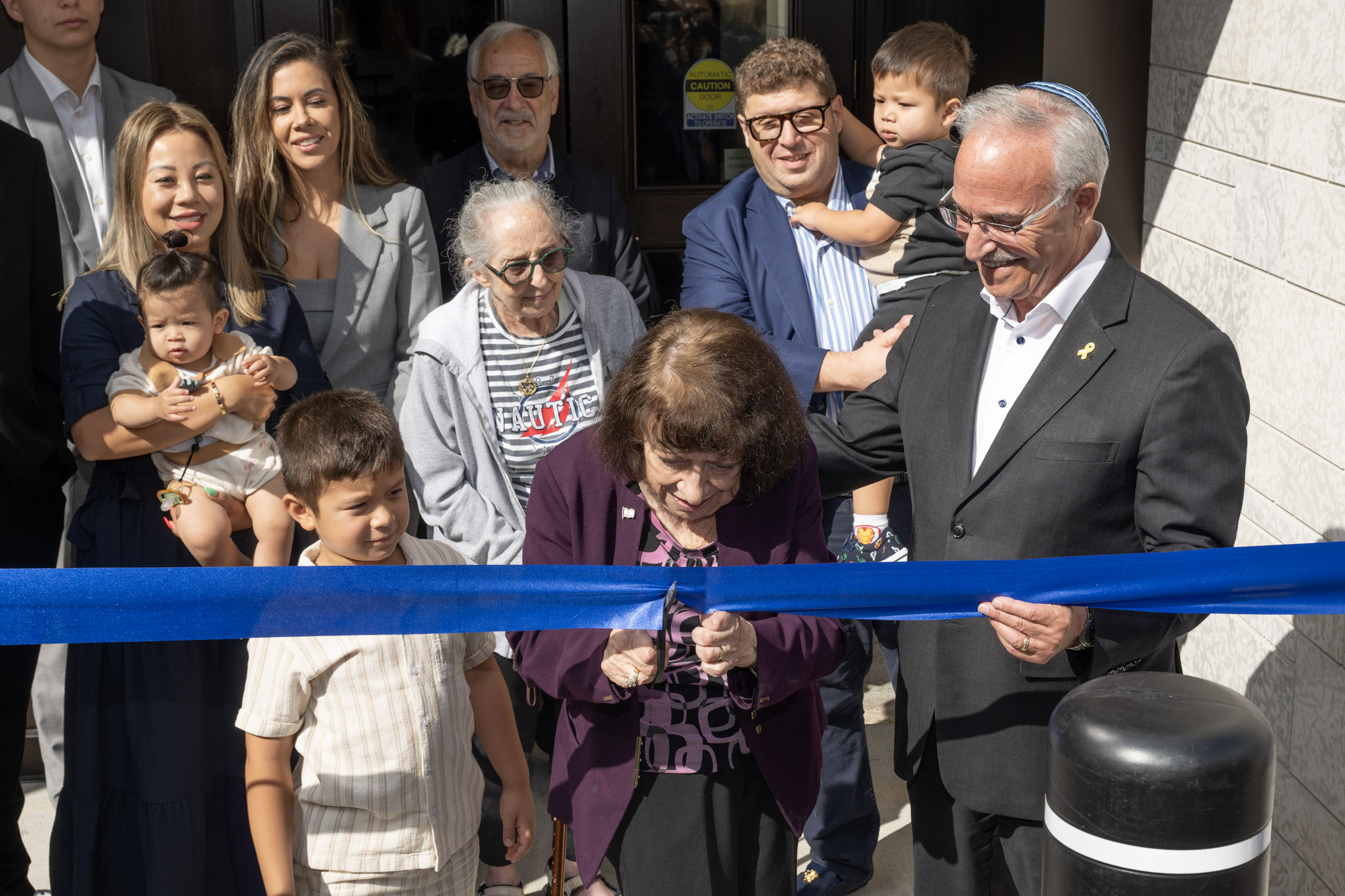Local News
Canadian premiere of play about the lives of Bella & Marc Chagall will leave you wanting to learn more

“The Flying Lovers of Vitebsk” – a WJT production – on now at the Asper Campus
Reviewed by BERNIE BELLAN Most of us are familiar with the paintings of Marc Chagall – with his surrealistic imagery permeated with flying cows, roosters, fish, and the moon. But, what about the man himself? What was he like as a husband? And, what about the woman he married? What was she like?
Now, in a new play being performed for the very first time in Canada, audiences find out that Marc Chagall also enjoyed a long and happy marriage to a brilliant woman, Bella, who died suddenly and much too soon shortly after the Chagalls had moved to America.
“The Flying Lovers of Vitebsk” tells the story of Marc and Bella’s romance – through words and music, with some beautiful choreography as well.
Set on a stage with the audience seated all around, and within a very large tent on the grounds of the Asper Campus, there is an unusual intimacy between audience and performers – in this case the two actors who play Marc and Bella: Daniel Greenberg and Isidora Kecman.
The play begins with Marc mounting the stage, soon to receive a phone call from someone (not seen) who evidently wants to discuss Marc’s paintings in very technical terms. But, the fact that he is speaking on a fairly modern looking phone would seem to indicate that the time is fairly recent.
Soon though, we are transported back in time to 1914 – which was a crucial period in history for so many reasons. It was in that year that Bella (née Rosenberg) meets Marc, who is already a successful painter. The two fall almost immediately in love, but with the First World War and the chaos of revolution enveloping Russia, Marc and Bella find themselves uprooted.
During the course of the play we find out that Bella comes from quite a wealthy family; her parents own three jewellery stores in their native city of Vitobsk (which I found out afterward is actually in Belarus). Marc’s father, in contrast, is a poor delivery man for pickle barrels.
Yet, the story is not told in chronological fashion. It’s not an attempt to tell the story of Marc and Bella Chagall’s lives beyond offering the audience glimpses of the chemistry – and occasional friction, that developed between them.
There are props used recurrently on the set – such as that aforementioned rooster, cow, and fish – that offer a hint of the motifs that are most common in Chagall’s paintings, but there is no probing of what led Chagall to seize upon those particular images. As such, anyone who might have expected to find a deeper examination of an artist’s motivation will leave “The Flying Lovers of Vitebsk” feeling somewhat disappointed.
Instead, they will be treated to a romantic evening that explores some of the key years in Chagall’s career and sets them into the context of his coming to terms with the anti-Semitism that engulfed Russia both before the 1917 Communist revolution, and then again following the revolution.
There are references to the pogroms that were a regular occurrence in pre-1917 Russia and later, after Chagall had been appointed to a prestigious position by the new Communist regime, the anti-Semitism that forced him to relinquish his post.
But, interspersed with the narrative of the play, there are occasional dance scenes and singing performed by the two young – and oh so attractive actors who play Marc and Bella. The energy that Daniel Greenberg and Isidora Kecman bring to their roles is truly awe-inspiring.
From time to time, they transition from actors speaking their lines to lithe dancers moving in beautiful and graceful harmony together. One scene in particular is bound to resonate with anyone watching this play – when Marc Chagall dances and leaps all around the stage with a long ribbon twirling magically in his hand, and with Bella the object of his adoration throughout.
And, although WJT Artistic Director Ari Weinberg had warned the audience beforehand that the play would be 75 minutes, with no intermission (so, if you hadn’t “pished” already, as Ari noted, you were in trouble), the audience the night I was there seemed quite enchanted by the entire production. I’m sure that most everyone can tell when members of an audience start to lose interest; it’s when the coughing starts.
I can’t recall hearing anyone cough at all during “The Flying Lovers of Vitebsk”.
As much as you will learn quite a bit about Marc and Bella Chagall though during this play, there are several references to how talented and brilliant Bella was in her own right that might make you wonder, as I certainly did, how much did her having to live in the shadow of such a well-known and successful painter as Marc Chagall dampen her own potential to become a great success in her own right? (She did write quite a bit of Yiddish poetry, we learn, but it is not at all clear to what extent she was published during her lifetime, if at all.)
As a result – and I discussed this with some other audience members afterward, it is likely that many people will want to find out a great deal more about the lives of Marc and Bella Chagall than they would have learned from watching this play.
“The Flying Lovers of Vitebsk” is on until June 19. For ticket information call 204-477-7478 or visit WJT.ca.
Local News
Thank you to the community from the Chesed Shel Emes

We’re delighted to share a major milestone in our Capital Campaign, “Building on our Tradition.” Launched in November 2018, this campaign aimed to replace our outdated facility with a modern space tailored to our unique needs. Our new building is designed with ritual at its core, featuring ample preparation space, Shomer space, and storage, creating a warm and welcoming environment for our community during times of need.
We’re grateful to the nearly 1,000 generous donors who contributed over $4 million towards our new facility. A $750,000 mortgage will be retired in November 2025, completing this monumental project in just seven years.
We’re also thrilled to announce that our Chesed Shel Emes Endowment Fund has grown tenfold, from $15,000 to $150,000, thanks to you, the Jewish Foundation of Manitoba’s FundMatch program, and Million Dollar Match initiative in 2024. Our fund helps ensure that everyone can have a dignified Jewish funeral regardless of financial need.
As we look to the future, our goal remains to ensure the Chevra Kadisha continues to serve our community for generations to come. Our focus now shifts to replenishing our savings account and growing our JFM Endowment fund.
We’re deeply grateful for your support over the past several years.
It’s our privilege to serve our community with care and compassion.
With sincere appreciation,
Campaign cabinet: Hillel Kravetsky, Gerry Pritchard, Stuart Pudavick,
Jack Solomon, and Rena Boroditsky
Murray S. Greenfield, President
Local News
Winnipeg Beach Synagogue about to celebrate 75th anniversary

By BERNIE BELLAN (July 13) In 1950 a group of cottage owners at Winnipeg Beach took it upon themselves to relocate a one-room schoolhouse that was in the Beausejour area to Winnipeg Beach where it became the beach synagogue at the corner of Hazel and Grove.
There it stayed until 1998 when it was moved to its current location at Camp Massad.
On August 2nd members of the synagogue will be holding a 75th anniversary celebration.

As part of the celebration anyone who is a descendant or relative of any of the original members of the first executive committee (as seen in the photo here) is invited to attend the synagogue that morning.
If you are a relative please contact Abe Borzykowski at wpgbeachshule@shaw.ca or aborzykowski@shaw.ca to let Abe know you might be attending or for more information about the 75th anniversary celebration.
We will soon be publishing a story about the history of the beach synagogue, which is something I’ve been writing about for over 25 years.
Local News
Vickar Family cuts ribbon on new Tova Vickar and Family Childcare Centre

By MYRON LOVE In the words of Larry Vickar, the Shaarey Zedek’s successful Dor V’ Dor Campaign “is not only a renewal of the synagogue but truly a renewal movement of Jewish life in our community.”An integral part of that renewal movement was the creation of a daycare centre within the expanded synagogue. On Monday, June 23, Larry and Tova Vickar cut the ribbon, thereby officially opening the Tova Vickar and Family Childcare Centre in the presence of 100 of their family members, friends and other supporters of the project.
The short program preceding the morning ribbon-cutting began with a continental breakfast followed by a welcome by both Fanny Levy, Shaarey Zedek’s Board President, and Executive Director Dr. Rena Secter Elbaze. In Elbaze’s remarks, she noted that Larry and Tova wanted their family (including son Stephen and family, who flew in from Florida) and friends at the event to celebrate the opening of the Tova Vickar and Family Childcare Centre, “not because of the accolades, but because, as Larry put it, he hopes that their investment in the congregation will inspire others to do the same.”
“When Larry and I spoke about what this gift meant to him and the message he wanted people to take away,” she continued, “I couldn’t help but connect it to the teachings of Reb Zalman Schachter-Shalomi whose book – Age-ing to Sage-ing – changes the whole way we look at the concept of ageing and basing it on our ancestral teachings.”
She explained that his concept of “Sage-ing” is based on three key ideas – Discover your meaning and purpose; accept our mortality and think about the legacy you want to leave.
“Larry spoke about these exact concepts when we met,” she said.
Elbaze also noted the presence of Shaarey Zedek’s newly-arrived senior Rabbi Carnie Rose, former Rabbi Alan Green, and area MLAs Mike Moroz and Carla Compton.
Larry Vickar expressed his great appreciation for all those in attendance. “Tova and I are deeply moved to stand here with you today for this important milestone in our community”, he said. “We are grateful to be surrounded by all of you, the people we care about, our family and friends… you who have touched our lives and played some part in our journey.”
